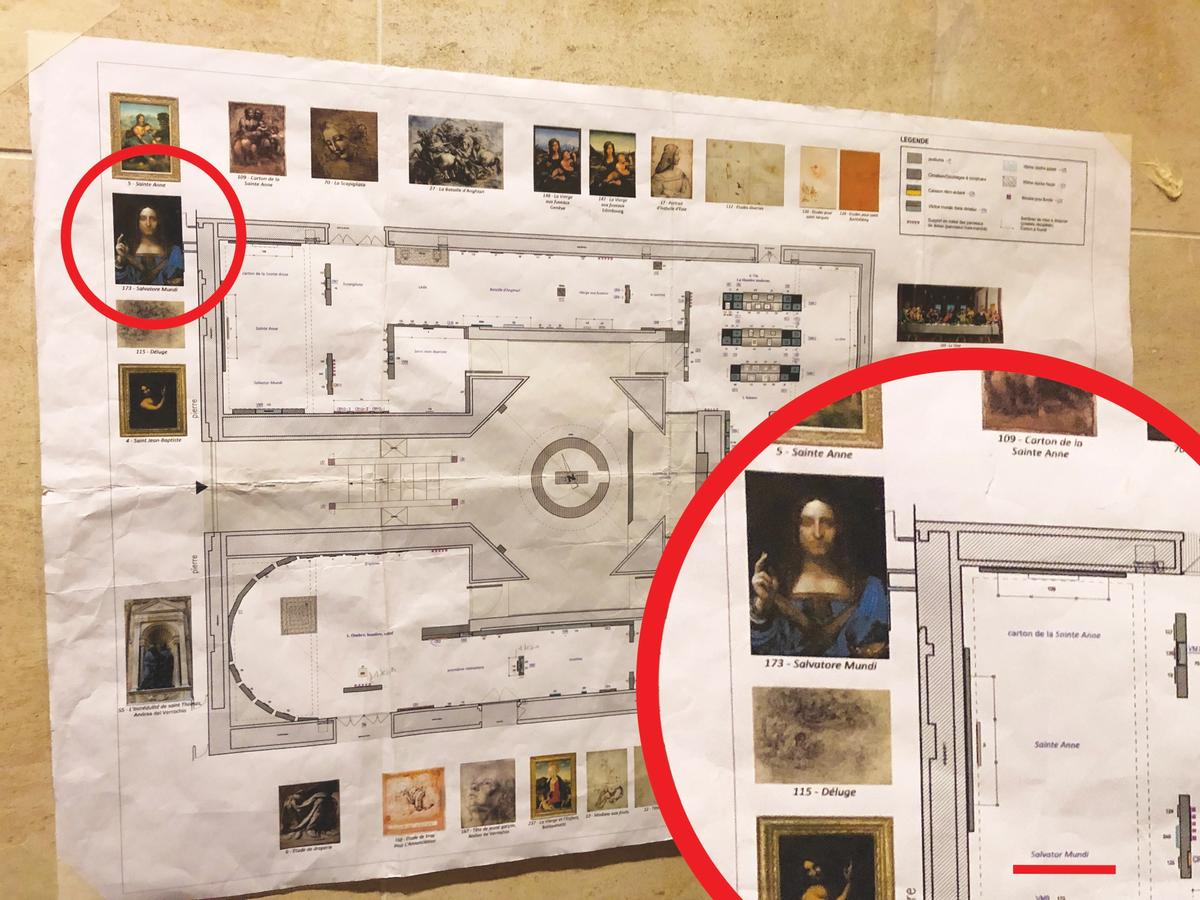A photograph sent to The Art Newspaper of the original Louvre ground plan for the Leonardo exhibition graphically illustrates that the Salvator Mundi was intended to be part of the show. The plan was removed from the Louvre's exhibition hall at the last minute on Friday, the day of the advance press preview.
The plan also shows the key role that the Salvator Mundi was intended to play in the exhibition. It is given pride of place in the final room, shown as part of a concluding triumvirate of great works—along with the Louvre's St Anne and the National Gallery Cartoon of St Anne—on the adjacent wall to the Ganay version of the Salvator Mundi and the two Windsor studies.
Just how late in the day the news came that the Salvator Mundi would not arrive in time for the press viewings is unknown. Intriguingly, at the viewing on 18 October the wall where it was intended to hang was briefly adorned with just three picture hooks: the Louvre’s St John the Baptist, sans label, was then hung in its place at the last minute.

The space where the Salvator Mundi was supposed to hang © The Art Newspaper
Yesterday we reported that a missing catalogue entry occurs between Cat 156—one of the Windsor studies for the Salvator Mundi—and Cat 158, the Ganay version of the subject. A Louvre official told The Art Newspaper that two versions of the catalogue were produced as negotiations for the painting’s inclusion continued: one to be used if the picture arrived in time, the other if it did not. It is possible that the late omission or delay could be due to bureaucratic logistics or the state of cultural diplomatic relations between France and Saudi Arabia, whose Ministry of Culture is rumoured to be the current owner of the painting. It looks as if the logistics were in place for the picture to travel to Paris, but something occurred between 27 September and the advance exhibition preview on 18 October to make the picture’s timely arrival less likely.
The Art Newspaper has learned that on 18 October, while the advance preview of the Leonardo show was underway at the Louvre, a legislative amendment was made to the French government’s decree of 27 September indemnifying the loans to the exhibition. The “order” of amendment anticipates the possible loan of Salvator Mundi, from 20 October to 31 December 2019 inclusive. This suggests that the Louvre is open to displaying the Salvator Mundi even if it arrives halfway through the exhibition’s run (it closes on 24 February 2020).

The full photograph of the Louvre's plan © The Art Newspaper
The amendment guarantees €800m for transport of works and also for the length of their stay on site at the Louvre during those dates, but this threshold is lowered to €450m for the period from 1 January to 31 March 2020 inclusive “if the loan of the Salvator Mundi, attributed to Leonardo da Vinci, is confirmed before the 1st of January 2020 inclusive”. The amount is reduced further, to €275m, “if this loan is not confirmed”.
Another legislative document reveals that negotiations for the loan of Salvator Mundi have been continuing for more than a year. In June 2018, the French government issued a decree of immunity from seizure for the painting during a proposed loan period lasting up to 3 March 2020. The owner listed in the legislative document at that time is the Department of Culture and Tourism, United Arab Emirates (UAE).
The October 2018 “order” also reveals that the museum is describing the $450m Salvator Mundi as “attributed to” Leonardo rather than as a definitive autograph work. The term “attributed to” usually refers to an attribution made by a knowledgeable expert, but suggests that the attribution has not been confirmed by a scholarly consensus.


